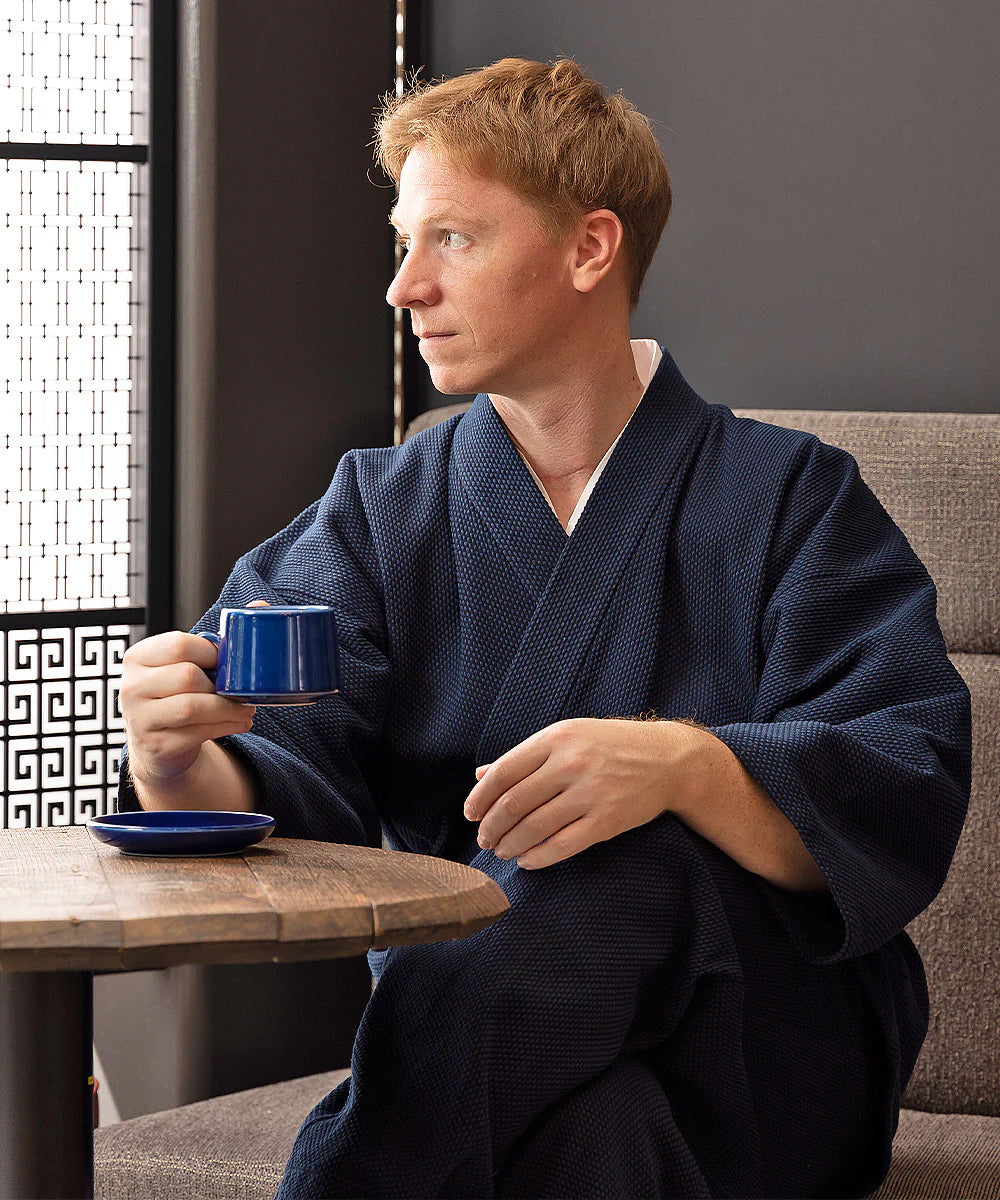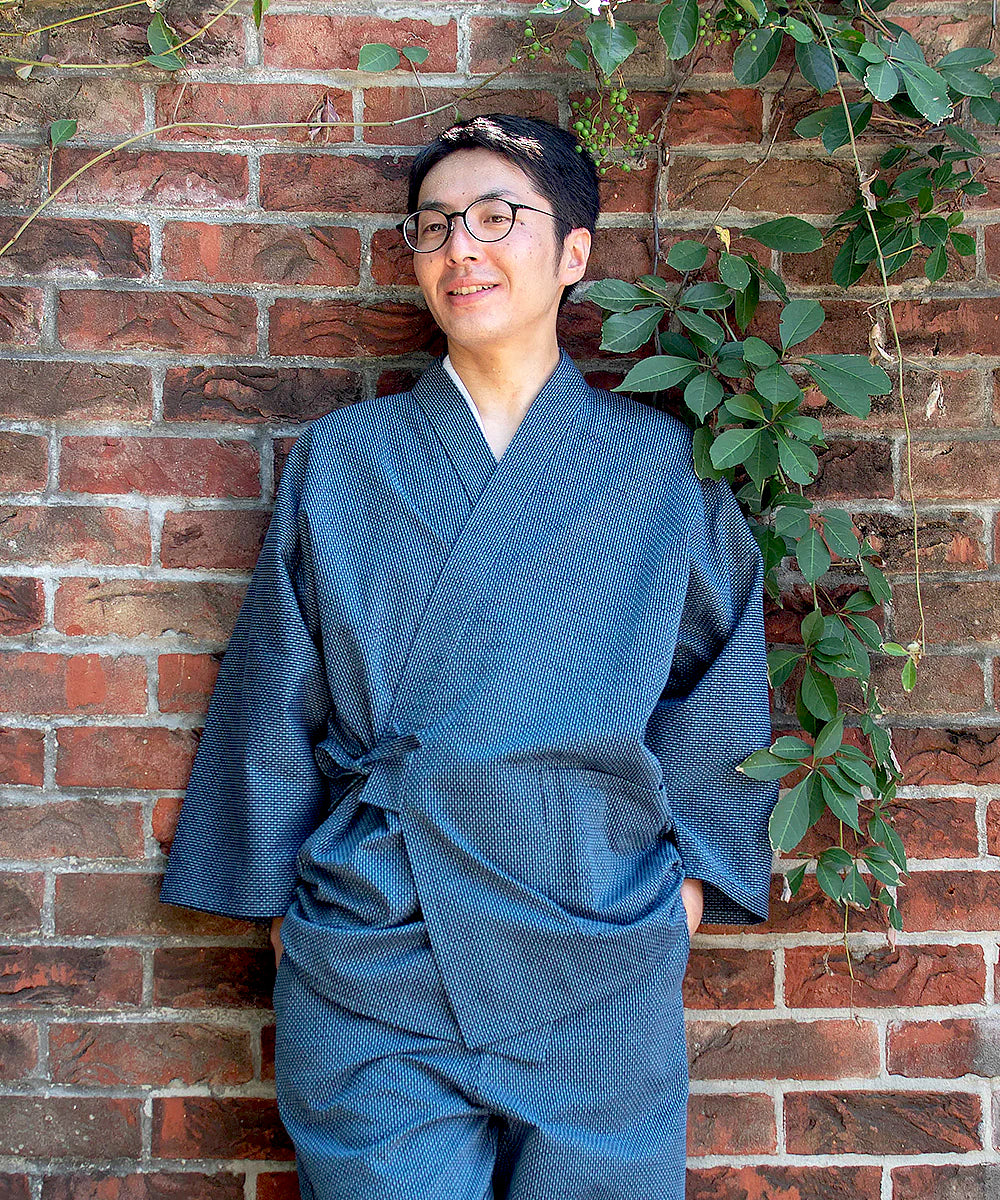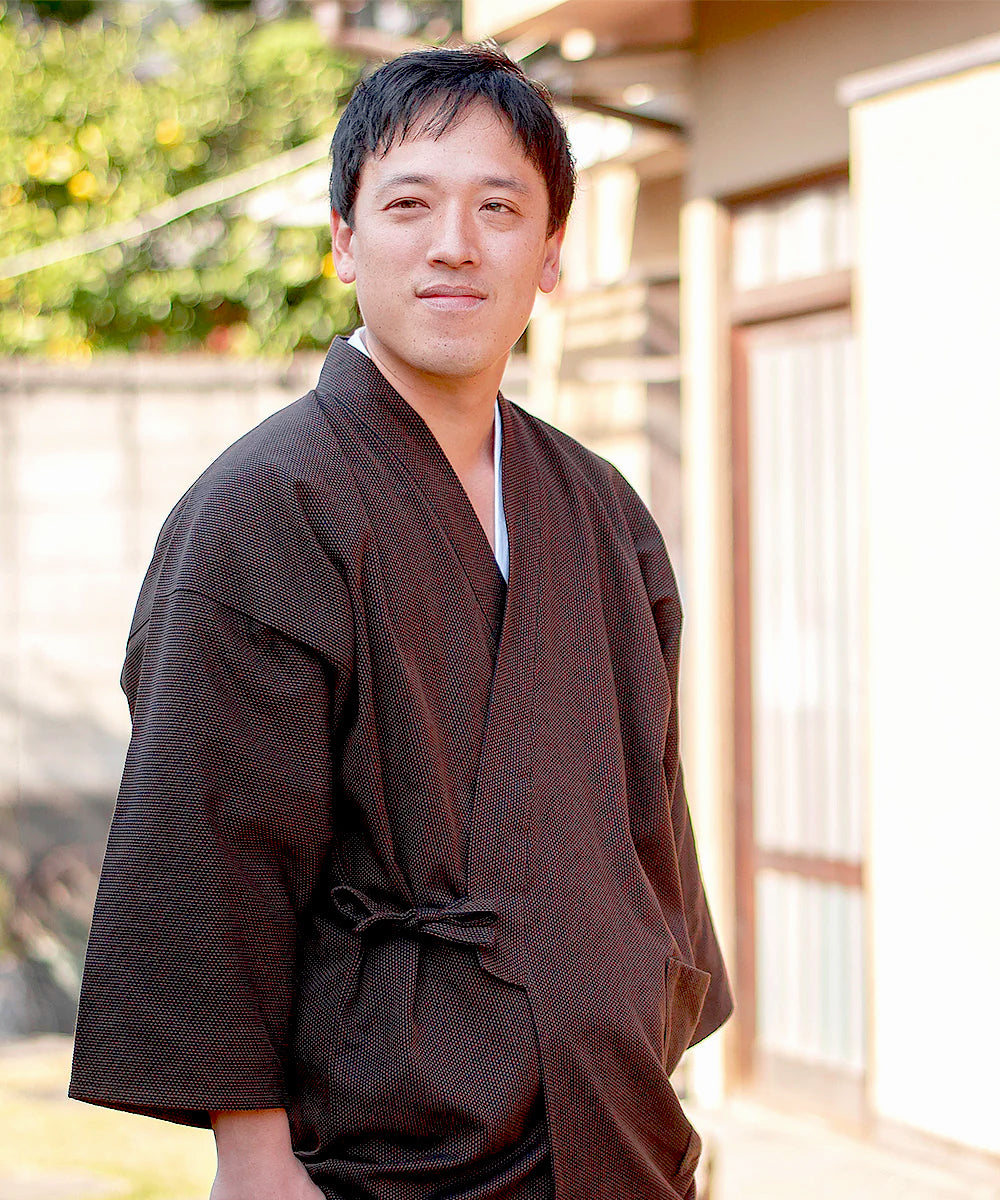Sashiko-ori
About Sashiko

Sashiko is a traditional Japanese stitch-weaving craft. It is said that the origins of sashiko can be traced back to the farmers who could only make clothes from hemp, and they regularly added hemp yarns to woven hemp cloth to make it more durable and retain heat. People used to hand-stitch the strands one at a time to reinforce their clothes and protect them from the cold, as well as to express their wishes and prayers for a good harvest, protection from evil, and prosperous business. According to research, the origins of Sashiko date back to the early 16th century, and this stitching is widely known, especially in the Tohoku region.
Kogin-zashi: Folk Cultural Properties of Japan
“Kogin-zashi" of the Tsugaru region in Aomori Prefecture, "Hishi-zashi" of the Nanbu region in Aomori Prefecture, and "Shonai-sashiko" of the Shonai region in Yamagata Prefecture are called the three major types of sashiko in Japan.

This is an example of a Kogin-zashi design. In the Tsugaru region, work wear for farming were called "kogin," hence the name. Originally, traditional kogin stitch is characterized by "white cotton thread on indigo-dyed hemp.”
It is said that the kogin-zashi technique originated with farmers who could only provide themselves with hemp, the only material that was self-sufficient in the area, and who regularly stitched hemp threads onto the woven hemp cloth to make it more durable and warmer. (As for Shonai-sashiko, it seems that they were made from old clothing and clothes from the then capital of Kyoto, since goods from the region, including Osaka, were distributed through the Sea of Japan.)
Adapting to the Needs of Time

The Sashiko technique was used for firefighters' uniforms in the Edo period (1603-1867) and is still used today for martial arts wear such as judo and kendo uniforms. Various fabrics and threads are also used by hobbyists, and the number of patterns is increasing. The time spent stitching by hand, without using a sewing machine, is said to be a popular activity, as a way of passing time and as a source of pleasure.

Sashiko-ori," a product of mechanization
As time went by, sashiko was shifted from manual labor to mechanization, and cotton fabrics woven to produce stitch patterns were developed. This is called "Sashiko-ori (sashiko weave).” As mentioned earlier, sashiko-ori is used for martial arts wear such as in judo and kendo because of its durability. Sashiko-ori, woven slowly and carefully, creates a sense of luxury and beautiful shading that a plain weave does not have. It is characterized by both simplicity and a sophisticated atmosphere. It also enhances durability and heat retention, making it one of the most comfortable fabrics for fall and winter clothing. Cotton stitch weave also has the advantage of being wrinkle resistant, has excellent moisture absorbency, and is soft to the touch, making it useful for both relaxing and work wear.

The photo above shows the "thick sashiko" fabric mentioned earlier. Most of the fabrics used for WASUIAN's sashiko woven products are woven in Enshu (the western part of present-day Shizuoka Prefecture).
It is said that cotton fabrics were originally developed in the Enshu region during the Edo period (1603-1868), particularly in Hamamatsu City, taking advantage of the region's climate. It is one of the "three major cotton textile production areas in Japan" along with the Senshu region (Osaka Prefecture) and the Mikawa region (Aichi Prefecture). Textiles woven on traditional looms in the Enshu region have a unique and gentle texture that becomes more comfortable as it is used.
[Fabric Collection ]Enshu Textile
Sashiko-ori is a traditional Japanese textile with excellent design and practicality. Why not spend the chilly seasons wearing a samue made of sashiko-ori?
Original Region of Big Companies Known Worldwide

As a side note, world-renowned motorcycle and automobile manufacturers such as Toyota, Honda, and Suzuki also have their manufacturing origins in the Enshu region. It is quite interesting that such large, well-known companies, have started there, and it lends itself to the idea of a particular region having a secret power.



